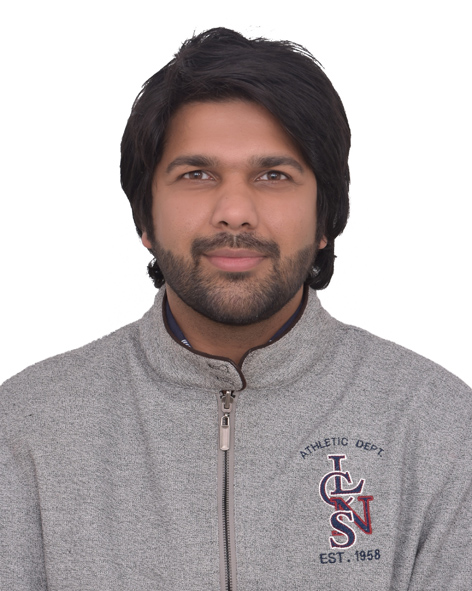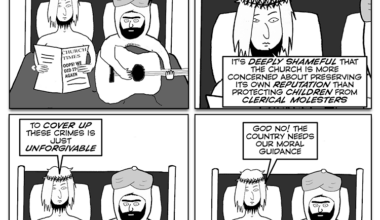
Festivals are an important PR opportunity. When they are religious festivals, they become a way of exhibiting the beliefs that the organisers want to showcase, and the image of the religion that they want to project. In South Asia, such festivals are often grotesque illustrations of majoritarian muscle-flexing.
Ram Navami witnessed a surge in violence against Muslims in India last week. The celebration of Ram’s birth provides the Hindutvaadis in India with the chance to reaffirm the deity as a symbol of Hindu supremacism. Chants of ‘Jai Shree Ram’ (‘glory to Lord Ram’) were weaponised by Hindutva mobs that had been emboldened by the triumphant construction of the Ram Temple on the disputed Ayodhya site. In the 16th century, a mosque was built on the site, which many conservative Hindus believe was the birthplace of Ram, by the founder of the Mughal Empire; in 1992, the mosque was demolished by radical Hindu mobs.
The weaponising of Ram Navami mirrors a similar weaponisation of the ‘love’ for Muhammad in Pakistan. The Islamic festival of Eid Milad-un-Nabi, the commemoration of Muhammad’s birth, has often been marred with violence against the constitutionally excommunicated Ahmadiyya Muslim community. The latter has been targeted for commemorating any Islamic festival, owing to the community’s belief in their sect’s founder, which is deemed by Islamists as sacrilegious. Ahmadiyya Muslims believe their 19th-century founder, Mirza Ghulam Ahmed, is an Islamic messiah; clerics of other sects deem this belief contradictory to Muhammad’s status as the final prophet of Islam.
Similarly, during the Islamic month of Ramadan in recent years, people have been imprisoned, fined or left to languish in Pakistani jails, or beaten up by Islamist mobs in both Pakistan and the officially ‘secular’ Bangladesh. The Taliban in both Pakistan and Afghanistan, and other jihadist groups in the region like Isis, often increase militant activity during Ramadan. They claim that jihad during the holy month is more rewarding, citing the victory in the Battle of Badr in 624 AD. According to Islamic tradition, this battle was the first between Muhammad’s army and the pagans of Mecca. The triumph of the outnumbered Muslims has been attributed by many Islamic theologians to the month of Ramadan.
As Islamic militancy has spawned regionally, and indeed globally, Hindutva radicalism has also caught the imagination of many in Hindu-majority Nepal. Meanwhile, Buddhist extremists are hoping to erase religious minorities in Sri Lanka and Bhutan.
Varieties of supremacism
In comparing varieties of religious extremism in South Asian states, it is important to stress the differences as well as similarities between them. Despite its precipitous anti-Muslim plunge under the Hindutva regime, Hinduism in India is not (yet) as dominant as Islam in Pakistan, where the religion is more brazenly institutionalised. For instance, not only is Islam the state religion in Pakistan, its supremacy is codified in the penal code. Sharia is used both to sanction violent penalties and also to legally discriminate between crimes committed against the majority and minority religious communities, such as blasphemy.
Multiple mosques remain under construction in India, whose constitution still dubs it a ‘secular nation’. In contrast, not a single Hindu temple has been constructed in Pakistan over the past 75 years, while around 95 percent of minority places of worship have been erased since the country was created in 1947.
In Afghanistan, like Pakistan, religious supremacy for Islam is etched in law via antediluvian sharia clauses. Meanwhile, Sri Lanka’s constitution upholds the ‘foremost position’ for Buddhism in the country, codifying the protection of this ideology as the ‘duty of the state’. In contrast, Bangladesh, Nepal and Bhutan remain formally secular, despite attempts by hardliners to give precedence to the religion of the majority. In Bangladesh, for instance, Islamists are demanding codification of sharia, and using Islam to suppress women’s rights or vandalise Hindu temples. In turn, the government looks to counter the religionist narrative – albeit unsatisfactorily – by issuing reminders of the country’s secular identity or of the fact that it does not have a state religion.
Despite these differences, religious supremacism is a common ailment in South Asia and often manifests itself in similar ways.
Across the region, the elevation of the majority’s religion, whether in law, government narrative, or via unhinged majoritarian radicals, results in its own fragmentation and an internal contest among the divisions to assert their supremacy within the religion. Different factions within the majority’s religion struggle to establish their interpretation of religion as the true one in their country. For instance, just as Islamic extremism in Pakistan has evolved into a quest to subjugate minority Muslim sects, and the millennia-old subjugation of ‘lower’ Hindu castes is upheld by the Hindutva regime in India, so, in Sri Lanka, the propagation of the Theravada strain has accompanied the rise of Buddhist radicalism.
Whenever such a contest erupts within an ideology, especially one that is propounding supremacism, those with the loudest voices are the advocates of a more fundamentalist, radical interpretation of their religion. The result is that minorities even within the majority religion are sidelined, and anyone who does not toe the radical line is shunned by the dominant faction as a ‘traitor’ or ‘blasphemer’ – two terms which have come to be used interchangeably. In a region increasingly in the grip of religious nationalism, allegations of this kind have been used against dissenters in an unrelenting assault on freedom of speech and thought.
Freethought under attack
Examples of the religious oppression of dissenters can be found across South Asia. Perhaps the most punitive cases are found in Afghanistan and Pakistan, both of which have blasphemy laws that prescribe death for criticism of Islam. In Pakistan, the blasphemy law encourages vigilante violence against those who offend Islamic sensibilities. A recent example of this was the death of Priyantha Kumara, a Sri Lankan, in the town of Sialkot in December. He was lynched by an angry mob after being accused of removing posters with Islamic prayers printed on them. Bangladesh has also witnessed a witch-hunt against blasphemy: hit-lists have been released of freethinking bloggers, with Islamists forcing atheists and secularists to flee.
At present, India’s blasphemy law treats all religions equally, and does not sanction death for offence to any religion. However, in 2018, a Member of Parliament for the ruling Bharatiya Jannata Party (BJP) introduced a private member’s bill that would have imposed the death penalty for cow slaughter – in other words, a Hindu blasphemy law. Although the bill was rejected after a debate, BJP members have vowed they will seek to introduce it again.
In different parts of India, slaughtering cows can attract various legal penalties, including imprisonment, although in some parts it is not criminalised. However, allegations of selling or consuming beef can still encourage Hindutva mob violence across the country, just like blasphemy accusations in Pakistan or Bangladesh. For example, in June, a man was lynched in Rajasthan for transporting cattle, while another was thrashed last month for ‘suspicion’ of carrying beef in Mathura.
Sri Lanka, where Buddhism is the dominant religion, has also seen mob violence similarly fueled by claims of attacks on Buddhism. In March, a 600-strong Buddhist mob broke into a church demanding that the worship be halted. While the country has not so far invoked jurisprudential protection for religiously-motivated suppression by the majority in the manner of India or Pakistan, incidents such as radical Buddhists instigating mob violence against minorities are becoming increasingly common.
Religiously motivated mobs form the first line of attack against freethought. Religionist governments use them to intimidate dissenters, while at the same time using the hordes’ extrastate identity to distance themselves from the consequences. The governments of India and Pakistan, for instance, would on the surface urge citizens to not take law into their own hands. At the same time, however, they profit from pressure by vigilantes which practically quash any debate on whether such laws – which effectively protect the intangible sensibilities of the majority’s religion – should even exist.
But dissent is also being silenced via official channels in South Asia. These days, courts in Pakistan have even imposed the death penalty for ‘sacrilegious’ WhatsApp messages. The Indian state is clamping down on all forms of art that a sufficient number of Hindus can claim to be offensive to Hinduism, such as film, theatre festivals or digital streaming productions. Meanwhile, in Sri Lanka, the government’s ‘Buddhist Publications/Texts Regulatory Act’ enables the state to dictate what can be published, especially in the realm of religion, including what can and cannot be said about Buddhism and its founder.
There are complex political roots behind the move of these governments to silence criticism of the official religious line. Ethnicism, regionalism, linguistics and a wide array of other factors all support the respective power structures in each state. Overall, however, religion is the binding force that upholds the autocratic machineries in South Asia. The dominance of a particular religious and political ideology in each state is an obstruction to all kinds of freedoms, but above all to displays of conscience which challenge the ideology in question.
The hegemony of religion
South Asia has been a melting pot of organised religions from around the globe, Abrahamic and dharmic, for millennia. Although Islam is Abrahamic in origin, two Islamic strains from the Sunni sect take their appellations from cities in India: the Deobandi and Barelvi. The latter, Barelvi, originated as a syncretic brand of Islam that merged Sufi, Indic and dharmic characteristics. South Asia’s indigenous polytheistic and nontheistic faiths have similarly coopted rigid monolithism; as a result, the principle of religious and philosophical pluralism is being sacrificed at the altar of unyielding homogeneity.
One characteristic of South Asian culture, which was well established long before the arrival of the Abrahamic faiths, is its subservience to superstition and attribution of paramount authority to religion. This culture remains entrenched today in the different states, regardless of which religion is dominant. But while those embracing theocratic constitutions – such as Afghanistan and Pakistan – would have no qualms about flaunting religious authority, even supposedly secular states in the region are more or less subservient to religious hegemony.
Secularism in India, unlike in Western countries, has translated into letting different religions have their own spheres of influence, while the state claims to treat all religions equally. The consequence of this has been that, in practice, religion has increasingly been allowed to interfere in civic life. This can be seen in the way in which cow vigilantes are now forcing everyone to make dietary and ritualistic choices based on Hindu beliefs.
Elsewhere in the region, states are letting religions rule their communities, thereby eroding their claims to secularity. The Supreme Court of Sri Lanka, for example, in a 2007 ruling on a case against mosque loudspeakers, maintained that the country is ‘secular’. However, it has elsewhere conceded that its constitution only mandates the protection of Buddhism, while the minority religions are not similarly safeguarded. This underlines the point that establishing the constitutional supremacy of one religion inadvertently breaches minority rights, even when they might be separately engrained in law.
The current situation in India demonstrates the way in which allowing different religions to govern communities plays into the hands of the majority. Once the followers of a dominant religion are given the power to impose its rules on their own community, by a religionist ‘mission creep’, they try to extend its authority even to nonbelievers.
Moreover, the custom of creating separate spheres of influence for different religions may ostensibly be designed to safeguard minorities, but in practice, it can hinder social progress. In Sri Lanka, for instance, the minimum age for marriage is 18 years, but the child marriage of Muslim girls is allowed because Islamic sharia governs family law in Muslim communities, since religious laws are allowed to rule domestic matters. This undermines women’s rights. In India, Muslim men were permitted to ‘instantly divorce’ their wives under sharia law until 2019, even though the practice had already been outlawed in neighbouring Pakistan and Bangladesh.
Allowing religious ideologies to be imposed on different communities inevitably leads to clashes and contradictions within the state. For instance, the court in the Indian state of Karnataka last month upheld the ban on ‘unessential’ religious symbols in secular schools. This led to a gross contradiction in the right to don religious garbs, wherein Muslim girls could not wear the hijab but Sikh boys could continue to wear turbans.
A secular state should not be determining which practices of any given religion are or are not ‘essential’. Instead, the state should uphold a uniform civil code which applies equally to the entire population. Where the adherents of some religions are treated preferentially to those of other or no religions, freedom of thought and expression cannot but suffer in the process.
‘Progressive’ suppression
In some cases, even advocates of liberal and progressive views have felt a misguided obligation to support the religious hegemony. The widespread liberal support for sexist Islamist modesty tools as symbols of ‘liberation’ is a case in point.
But a religion is just another ideology. A truly liberal approach is not to treat schoolchildren wearing religious clothing any differently from those wearing flags of a political party or jerseys of a particular sports team. Where there is good reason for imposing a uniform dress code, such as in a school, no exceptions should be made on the grounds of religion, any more than they would be in the case of manifestations of a political or sporting affiliation.
In India, defending the Muslim right to flaunt Islamic garb could be interpreted as challenging the already skewed religious narrative in the country, since the targeting of Islamic practices, regardless of how regressive they might be, stems from Hindu majoritarianism more so than any adherence to secularism. However, many self-avowed liberals or progressives in the West have called their own countries’ institutions ‘Islamophobic’ for treating Islam like other religions. Once again, secular progressivism should mean that religious beliefs and practices are treated the same as any other ideology. It does not mean that they should be viewed with a misplaced reverence, or especially privileged.
The support for religious dogma by progressives, in misguided defence of human rights, has unfortunate repercussions in places like Afghanistan and Pakistan, where the same dogmas are used as a tool of oppression. The claim that satirising Islam is an attack on Muslims – even in states that allow significantly harsher mockery of the majority’s religion, such as France – is being used as a ‘progressive’ argument in countries like Pakistan, where criticism of Islam is violently suppressed.
This in turn has adverse effects on debate on religion in these countries, where both religionists and liberals seek to ‘reclaim’ religion. In Pakistan, for instance, the goalposts have been shifted so that the question is no longer whether Islamic dogma should have any bearing on whether people should be executed for blasphemy, but on whether blasphemy is, as some liberals now argue, ‘un-Islamic’.
Many progressives, like Pakistani-born American author Qasim Rashid, cherry pick Islamic theology so as to suggest that violence has ‘nothing to do’ with Islam. At the same time, minorities – including Rashid’s own Ahmadiyya Muslim community in Pakistan – are being violently suppressed, explicitly using 1,400-year-old Islamic laws against blasphemy. Opposing discrimination against Muslims should not translate into liberals’ defending Islamic scriptures against their critics, or into propagation of the term ‘Islamophobia’ in countries where fear of Islam is perfectly rational.
India, which has a long tradition of self-questioning and indigenous criticism of Hinduism, is now seeing staunch secularists lecturing Hindu nationalists on what it actually means to be Hindu. This is a classic ‘no true Scotsman’ argument, since it claims that that anyone using violence in the name of Hinduism is not a bona fide member of the religious community. Such an approach is a cop-out, since it looks to avoid addressing the Hindu roots of Hindutva; it is also a clear surrender to religion, and religious identity, as the undisputed power centre of both the religionist and secularist spheres.
India’s upholding of Hindu traditions as the bedrock of Indian civilisation is mirrored in Sri Lanka’s promotion of Buddhist heritage as intrinsic to its national identity. The association between civilisation and religious tradition has reaffirmed the latter as central to political dynamics in Sri Lanka, where loyalty to the Buddhist heritage was initially codified in the constitution and is now being rammed home by majoritarian mobs.
Altogether, there is less and less room for political discourse in South Asia that does not involve religious frames of reference.
Denying universalism
While adherents of Islamic and dharmic doctrines see their religious beliefs as antithetical to one another, today they use similar arguments to defend their religion’s supremacy. Such arguments have been dutifully propagated by progressives in those countries as well. Where national environments have become increasingly hostile to religious self-reflection, those in power simply label criticism of Islamic or Hindu traditions – especially that originating in foreign countries – as a ‘western’ narrative.
As a result, critics of organised religion are increasingly silenced in South Asia. The unequivocal rejection of religious doctrine or tradition is depicted as a ‘western’ value; thus, anyone who advocates this view can be accused of being disloyal to their community. The criticism of religion is also dismissed as being grounded in an insufficient understanding of religious doctrine. This approach implies that criticism of religion is itself illegitimate; thus only those who believe in the religion, or at least refrain from criticising it, have the right to discuss it in the first place.
But denying the ability to criticise the majority’s religion freely is to deny a tradition which has deep roots both in India and among many Muslim philosophers. Moreover, to label freethought and the criticism of religion as illegitimate is to imply that they have no relevance in South Asian countries. In fact, though, freedom of thought and speech are universal human rights, which ought to be just as inalienable here as in the West.
There is no reason why the practice of thinking and speaking freely need automatically lead to a complete rejection of all theology. The crucial point is that the advancement of a pluralistic, tolerant and liberal democracy is only possible if no one religion is privileged above others, and if criticism of all religions is freely permitted. For that to transpire in our neck of the woods, freethought needs to be wrestled back from the South Asian ideologues who have pushed all matters of social, civilisational, and human significance into the intolerant domain of religion.









1 comment
Your email address will not be published. Comments are subject to our Community Guidelines. Required fields are marked *
Donate